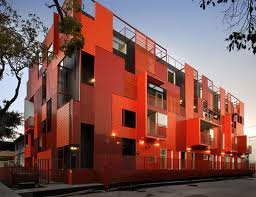The segment of the housing industry that caters to those home buyers and renters who are 55+ years old saw gradual but steady improvement in 2011. This trend is expected to continue throughout 2012 as more baby boomers turn 55 and seek new homes and communities that offer the lifestyle they desire. However, since the conditions of the current overall housing market are limiting their ability to sell their existing homes, this market is not recovering as quickly as might have been expected.
Like the overall single-family housing market, the 55+ housing segment is facing a slow but steady recovery. "NAHB is projecting that the number of housing starts in 55+ communities will increase 18 percent to 53,200 units in 2012, and another 25 percent, to 66,600 in 2013," said Paul Emrath, NAHB's vice president of survey and housing policy research.
Emrath said the multifamily segment of the 55+ housing market is doing particularly well, with an estimated 57% increase to 21,300 starts in 2011, and further increases in the forecast of 25,400 new apartments in 2012 and 29,100 in 2013.
According to NAHB, the 55+ housing market should continue to gradually improve over the next few years. "Nevertheless, this market remains fragile as many people in this sector who would like to purchase a new home are having difficulties selling their existing homes," noted Emrath. "The issues constraining their ability to sell are the same issues restraining the overall single-family housing market - low appraisals, a large supply of foreclosures and tighter mortgage lending criteria."
Knowing their customer base is important for builders' success in the current economic climate. "The 55+ builders who are doing well in these challenging times are innovative and creative and are in touch with their customer base," said W. Don Whyte, president of Kennecott Land in South Jordan, Utah, and incoming chairman of NAHB's 50+ Housing Council. "Successful builders also continually conduct market research on buyer's preferences and needs."
"Meeting the needs of buyers in the 55+ market involves having a more focused and targeted strategy on how to design, build and market new homes," said Whyte. "Successful builders and developers in the current market will encompass this approach." BD+C
Related Stories
Market Data | Apr 1, 2024
Nonresidential construction spending dips 1.0% in February, reaches $1.179 trillion
National nonresidential construction spending declined 1.0% in February, according to an Associated Builders and Contractors analysis of data published today by the U.S. Census Bureau. On a seasonally adjusted annualized basis, nonresidential spending totaled $1.179 trillion.
Affordable Housing | Apr 1, 2024
Biden Administration considers ways to influence local housing regulations
The Biden Administration is considering how to spur more affordable housing construction with strategies to influence reform of local housing regulations.
Affordable Housing | Apr 1, 2024
Chicago voters nix ‘mansion tax’ to fund efforts to reduce homelessness
Chicago voters in March rejected a proposed “mansion tax” that would have funded efforts to reduce homelessness in the city.
Standards | Apr 1, 2024
New technical bulletin covers window opening control devices
A new technical bulletin clarifies the definition of a window opening control device (WOCD) to promote greater understanding of the role of WOCDs and provide an understanding of a WOCD’s function.
Adaptive Reuse | Mar 30, 2024
Hotel vs. office: Different challenges in commercial to residential conversions
In the midst of a national housing shortage, developers are examining the viability of commercial to residential conversions as a solution to both problems.
Sustainability | Mar 29, 2024
Demystifying carbon offsets vs direct reductions
Chris Forney, Principal, Brightworks Sustainability, and Rob Atkinson, Senior Project Manager, IA Interior Architects, share the misconceptions about carbon offsets and identify opportunities for realizing a carbon-neutral building portfolio.
Reconstruction & Renovation | Mar 28, 2024
Longwood Gardens reimagines its horticulture experience with 17-acre conservatory
Longwood Gardens announced this week that Longwood Reimagined: A New Garden Experience, the most ambitious revitalization in a century of America’s greatest center for horticultural display, will open to the public on November 22, 2024.
Office Buildings | Mar 27, 2024
A new Singapore office campus inaugurates the Jurong Innovation District, a business park located in a tropical rainforest
Surbana Jurong, an urban, infrastructure and managed services consulting firm, recently opened its new headquarters in Singapore. Surbana Jurong Campus inaugurates the Jurong Innovation District, a business park set in a tropical rainforest.
Cultural Facilities | Mar 27, 2024
Kansas City’s new Sobela Ocean Aquarium home to nearly 8,000 animals in 34 habitats
Kansas City’s new Sobela Ocean Aquarium is a world-class facility home to nearly 8,000 animals in 34 habitats ranging from small tanks to a giant 400,000-gallon shark tank.
Market Data | Mar 26, 2024
Architecture firm billings see modest easing in February
Architecture firm billings continued to decline in February, with an AIA/Deltek Architecture Billings Index (ABI) score of 49.5 for the month. However, February’s score marks the most modest easing in billings since July 2023 and suggests that the recent slowdown may be receding.

















